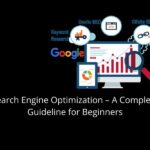Data analytics refers to the process of examining, cleaning, transforming, and modeling raw data to discover useful information, informing conclusions, and supporting decision-making. It involves the application of statistical and mathematical techniques to interpret patterns, trends, and relationships within datasets. In this context, our focus is on the power of data analytics for improved sales conversion.
Let’s dive into the deep:
Data analytics Categories:
Data analytics plays a crucial role in various fields and industries, including business, finance, healthcare, marketing, and more, by helping organizations uncover insights, make informed decisions, and gain a competitive advantage
Here are some board categories:
Descriptive Analytics: This type focuses on summarizing historical data to understand what has happened in the past. It involves basic statistical analysis and data aggregation techniques to provide insights into past performance.
Diagnostic Analytics: Diagnostic analytics aims to determine why certain events occurred by analyzing historical data and identifying the root causes of specific outcomes or issues. It involves more in-depth investigation and exploration of data to understand relationships and dependencies.
Predictive Analytics: Predictive analytics involves using historical data to forecast future trends, behaviors, or outcomes. It leverages advanced statistical modeling and machine learning algorithms to make predictions based on patterns identified in past data.
Prescriptive Analytics: This type of analytics goes beyond prediction by recommending actions to optimize future outcomes. It combines insights from predictive analytics with decision-making algorithms to provide actionable recommendations for achieving desired goals.
The Power of Data Analytics for Improved Sales Conversion
Data analytics empowers businesses to gain a deeper understanding of their customers, optimize sales processes, and drive higher sales conversions, ultimately leading to improved sales performance and business growth.
The power of data analytics for improved sales cannot be overstated. Here’s how data analytics can significantly impact sales performance:
Customer Insights:
Data analytics enables businesses to gain deep insights into customer behavior, preferences, and buying patterns. By analyzing customer data, such as purchase history, browsing behavior, and demographic information, businesses can tailor their sales strategies to meet the needs and preferences of their target audience more effectively.
Sales Forecasting:
Data analytics allows businesses to forecast sales more accurately by analyzing historical sales data, market trends, and other relevant factors. This enables businesses to anticipate demand, optimize inventory levels, and allocate resources more efficiently to maximize sales opportunities.
Targeted Marketing:
With data analytics, businesses can segment their customer base and create targeted marketing campaigns tailored to specific customer segments. By delivering personalized messages and offers based on customer preferences and behavior, businesses can increase the effectiveness of their marketing efforts and drive higher sales conversions.
Optimized Pricing Strategies:
Data analytics can help businesses optimize their pricing strategies by analyzing factors such as competitor pricing, demand elasticity, and customer willingness to pay. By leveraging pricing analytics, businesses can set prices that maximize revenue and profitability while remaining competitive in the market.
Customer Retention and Loyalty:
By analyzing customer data, businesses can identify at-risk customers and proactively engage with them to prevent churn. Data analytics can also help businesses identify opportunities to enhance customer loyalty through targeted retention strategies, such as loyalty programs, personalized offers, and exceptional customer service.
Sales Performance Optimization:
Data analytics enables businesses to track and analyze sales performance metrics in real-time, allowing sales teams to identify areas for improvement and take proactive measures to optimize performance. By providing actionable insights into sales activities, pipelines, and conversion rates, data analytics empowers sales teams to make data-driven decisions and achieve better results.
How to Use Data Analytics to Improve Sales
Using data analytics to improve sales involves several steps and strategies. Here’s a comprehensive guide on how to leverage data analytics effectively for sales improvement:
Define Objectives and Key Performance Indicators (KPIs):
Clearly define your sales objectives, such as increasing revenue, acquiring new customers, or improving customer retention.
Identify relevant KPIs that align with your objectives, such as conversion rates, average order value, customer lifetime value, etc.
Collect Relevant Data:
Gather data from various sources, including your CRM system, website analytics, sales transactions, customer feedback, social media, etc.
Ensure data quality by cleaning and standardizing the data to eliminate errors and inconsistencies.
Segment Your Customer Base:
Use data analytics to segment your customer base based on demographics, purchase history, buying behavior, etc.
Identify high-value customer segments with the potential for increased sales opportunities.
Customer Profiling and Persona Development:
Create detailed customer profiles and personas based on data analysis to understand your target audience better.
Tailor your sales and marketing strategies to address the specific needs and preferences of different customer segments.
Predictive Analytics for Sales Forecasting:
Utilize predictive analytics techniques, such as regression analysis or machine learning algorithms, to forecast future sales trends and demand patterns.
Anticipate customer needs and adjust inventory levels, pricing strategies, and promotional activities accordingly.
Optimize Pricing and Discount Strategies:
Analyze pricing data and customer behavior to determine optimal pricing levels and discount strategies.
Implement dynamic pricing models or personalized discount offers based on customer segments and purchase history.
Personalized Sales and Marketing Campaigns:
Leverage data analytics to personalize sales and marketing campaigns based on customer preferences, past interactions, and browsing behavior.
Deliver targeted messages, offers, and recommendations through email marketing, retargeting ads, or personalized product recommendations.
Sales Performance Monitoring and Optimization:
Monitor key sales performance metrics in real-time, such as conversion rates, sales pipeline velocity, and sales rep productivity.
Identify bottlenecks or areas for improvement in the sales process and take proactive measures to optimize performance.
Continuous Testing and Iteration:
Implement A/B testing and experimentation to test different sales strategies, messaging, and promotional offers.
Analyze the results of experiments to identify what works best and refine your sales approach accordingly.
Invest in Sales Analytics Tools and Technology:
Utilize advanced analytics tools and technology platforms, such as CRM systems, business intelligence software, and predictive analytics platforms, to streamline data analysis and decision-making processes.
By following these steps and strategies, businesses can harness the power of data analytics to gain actionable insights, optimize sales processes, and drive sustainable sales growth.
Also Read
Impact of Improved Sales on Today’s Businesses
Improved sales have a profound impact on businesses in today’s competitive landscape. Here are some key ways in which enhanced sales performance influences modern businesses:
Increased Revenue and Profitability:
Improved sales directly correlate with increased revenue and profitability. By converting more leads into paying customers, businesses can boost their top-line revenue and enhance their bottom-line profitability. This additional revenue can be reinvested into the business for further growth, expansion, or innovation.
Enhanced Market Share and Competitive Advantage:
Higher sales enable businesses to capture a larger share of the market and solidify their position against competitors. Increased market share not only strengthens the brand’s presence but also creates barriers to entry for potential competitors. Businesses with a reputation for high sales performance often enjoy a competitive advantage and are better positioned to withstand market fluctuations and challenges.
Business Growth and Expansion Opportunities:
Improved sales provide the foundation for sustainable business growth and expansion. With a steady stream of revenue and a growing customer base, businesses can explore new markets, launch new products or services, and expand their operations geographically. Enhanced sales performance opens up new opportunities for business growth and diversification, enabling businesses to reach new heights of success.
Better Investment and Resource Allocation:
Increased sales provide businesses with greater financial resources and flexibility for investment and resource allocation. Businesses can allocate funds towards strategic initiatives such as research and development, marketing campaigns, infrastructure improvements, or talent acquisition. Improved sales performance allows businesses to make smarter investment decisions and allocate resources more effectively to drive long-term growth and success.
Improved Cash Flow and Financial Stability:
Higher sales translate into improved cash flow and financial stability for businesses. With a steady stream of revenue coming in, businesses can better manage their expenses, repay debts, and weather financial challenges. Improved cash flow also provides businesses with the liquidity needed to seize opportunities, respond to market changes, and invest in future growth initiatives.
Enhanced Customer Relationships and Loyalty:
Increased sales are often indicative of satisfied customers and strong customer relationships. By delivering value and meeting customer needs, businesses can foster loyalty and long-term relationships with their customers. Repeat business and referrals from satisfied customers contribute to sustained sales growth and create a loyal customer base that serves as a foundation for future success.
Innovation and Adaptability:
Improved sales encourage businesses to innovate and adapt to changing market dynamics. Businesses that consistently outperform their competitors in sales are often those that embrace innovation, experiment with new ideas, and adapt quickly to emerging trends. Enhanced sales performance fosters a culture of innovation and agility, positioning businesses for long-term success in today’s rapidly evolving business environment.
Also Read
End Words
Improved sales have far-reaching implications for businesses, including increased revenue and profitability, enhanced market share and competitive advantage, opportunities for growth and expansion, better investment and resource allocation, improved cash flow and financial stability, stronger customer relationships and loyalty, and a culture of innovation and adaptability. Embracing strategies to enhance sales performance is essential for businesses looking to thrive and succeed in today’s dynamic marketplace.
Data analytics is the process of transforming raw data. I hope you can understand the power of data analytics for improved sales conversion.







